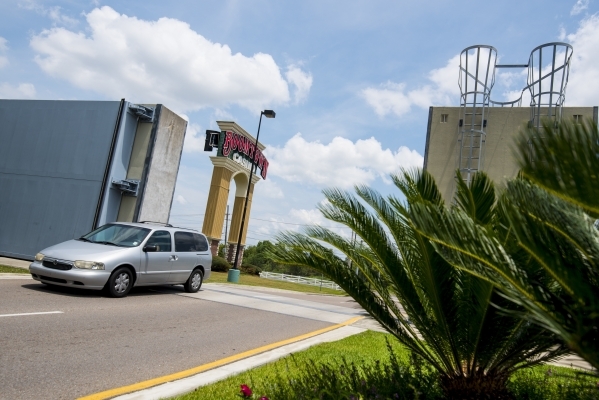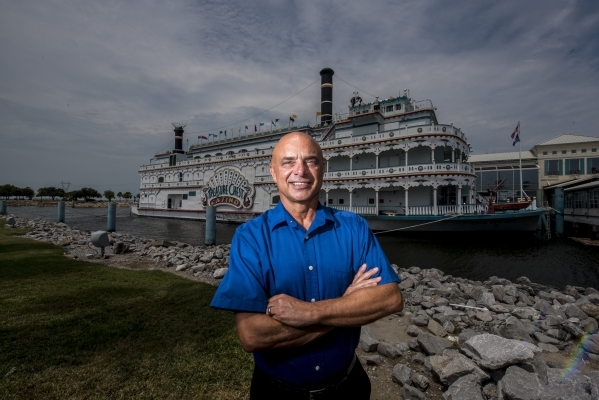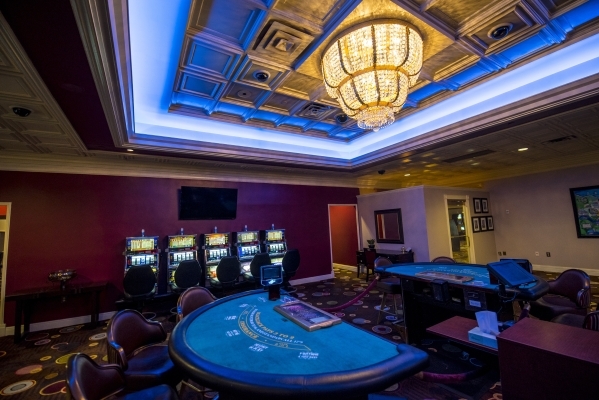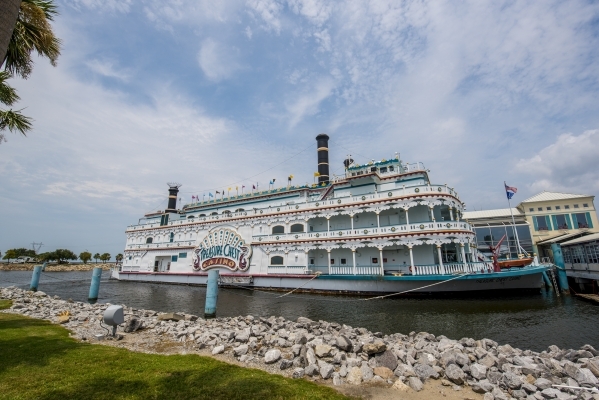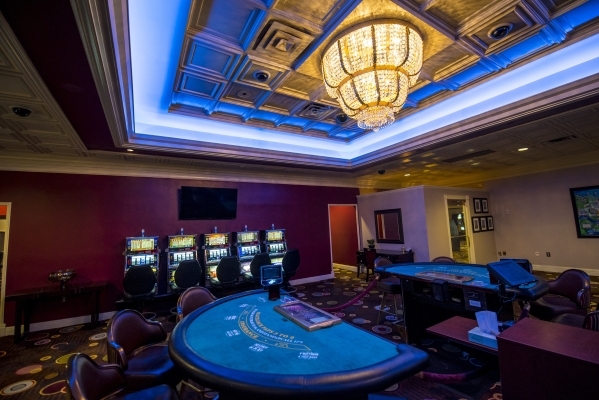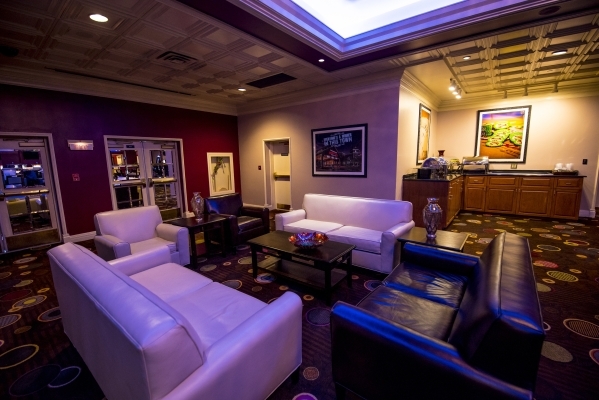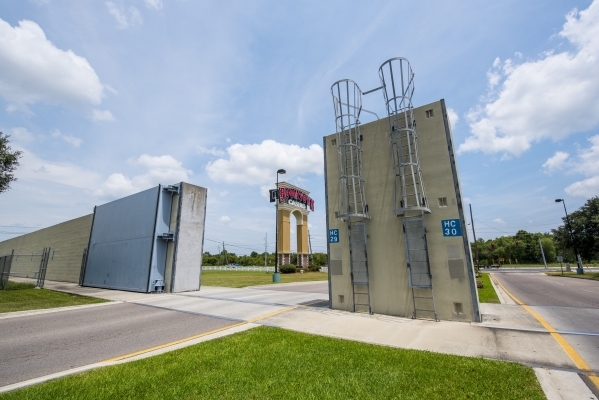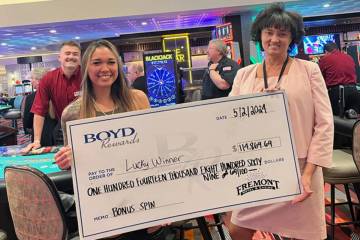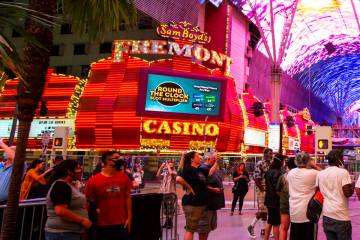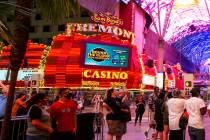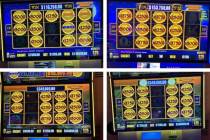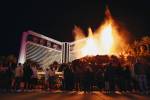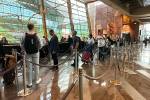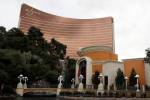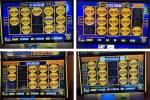Gaming industry commitment to New Orleans unwavering after the disaster
NEW ORLEANS — The most noticeable change in The Big Easy casino market 10 years after Hurricane Katrina is the 14-foot-high concrete-and-steel wall that encircles Boomtown New Orleans.
"With the big iron doors, it kind of reminds you of 'Escape from New York,' " said Boomtown general manager Harold Rowland, comparing the Harvey Canal Floodwall to prison walls in the 1981 John Carpenter film.
The 3.5-mile-long structure was built as a safety measure by the U.S. Army Corp. of Engineers along Peters Road to protect the suburban Jefferson Parish community of Harvey, should the Mississippi River again overflow. It was completed five years after Katrina breached several levees in the New Orleans area. The subsequent flooding left more than 80 percent of the city under water for weeks, destroying thousands of homes and businesses and killing more than 1,570 people in the worst natural disaster to hit the Deep South. A U.S. Senate report estimated the damage at $150 billion.
The New Orleans casino industry, for the most part, emerged from the August 2005 storm intact.
Two casinos — Las Vegas-based Pinnacle Entertainment's Boomtown and Boyd Gaming Corp.'s Treasure Chest — were back in business less than two months after Katrina. Caesars Entertainment Corp.'s Harrah's New Orleans reopened in time for Mardi Gras six months later.
A damaged casino riverboat survived, but now operates elsewhere in Louisiana.
In the past decade, the three-casino market has done more than provide a healthy revenue stream to their Las Vegas-based owners. It's helped sustain and revive the wounded city.
"From a tourist standpoint, the city is the strongest it's ever been," said John Payne, the CEO of Caesars Entertainment Operating Co. "There is an entrepreneurial spirit here that the city never had before."
COMMITED TO THE CITY
When Katrina hit, Payne was regional president of Harrah's (now Caesars) Gulf Coast Division, which included Harrah's New Orleans. The casino, located near the entrance to the French Quarter, sustained only minor cosmetic damage. Because the city was virtually uninhabitable, however, it was closed for months, with its porte cochère pressed into service as a New Orleans Police Department command center.
Payne, who still lives in New Orleans and maintains his office in a restored historic building adjacent to the Harrah's New Orleans Hotel, said Katrina forced people to leave the city and then decide if they wanted to return.
"Everyone who came back had a commitment to help rebuild the city in many different ways," Payne said. "Tourism is one of the top drivers of business in this town. It's one of the areas that had to be great again."
Rowland, who has been Boomtown's general manager for three years, was working in Washington D.C. when Katrina slammed ashore.
Boomtown, a roughly 20-minute drive southeast of the French Quarter in Harvey, reopened in the aftermath to give storm-weary residents needed entertainment and to serve thousands of meals to law enforcement personnel, electrical crews and construction workers who were putting New Orleans back together.
Harvey was not affected directly by the flooding.
"It seems like a special relationship was created among the team members who went through Katrina together," Rowland said. "I have heard them talk about how they were able to do something good for the community and allow the customers to have some sense of normalcy. We became a place for locals to escape and get a warm meal."
Boyd Gaming Corp.'s Treasure Chest Casino in Kenner, 15 miles west of New Orleans, was also quick to reopen, though in the days after Katrina company officials didn't even know if it had survived.
Dean Naquin captained the boat on Lake Pontchartrain gambling cruises before it was moored for good, becoming a dockside casino in 2001. Katrina was the first storm to prompt Boyd Gaming officials to order the crew to "abandon ship."
It wasn't until three days after the storm that Naquin, now chief of the Treasure Chest facilities department, was able to fly over the Lake Pontchartrain site to confirm that the moorings had held.
"Water surrounded the boat," Naquin said. "The whole area was flooded days until the water receded. The outbuildings and shelters around the boat were gone."
It was a close call for the Treasure Chest. Naquin said the debris line showed the water came within three feet of breaching the levy around Pontchartrain Center, where the boat was moored, and flooding Kenner as well.
"It took us a while to get staff back in here," he said.
STEPPING UP
In the years since Katrina, the New Orleans casino market has seen gaming revenue bounce around.
The three casinos produced $548 million in revenue in 2004, the last full year before Katrina, according to the Louisiana Gaming Control Board. In 2005, revenue declined to $499.9 million, with Harrah's closed the last four months of the year.
In 2006, gaming revenue was $696.4 million for the three casinos, followed by $698.5 million in 2007. However, the recession and new regional competition has driven New Orleans revenue down each of the past seven years. In 2014, the three casinos produced $552.5 million.
There wasn't much the casino operators could do about the Great Recession, but they have upped their game to compete against regional competitors in Louisiana and other states. Boomtown and Harrah's have added hotels and other amenities to their properties, though the Treasure Chest, limited by its moorage in a state park, remains relatively unchanged.
Harrah's New Orleans, owned by Caesars Entertainment, had operated a 115,000-square-foot casino with a few restaurants since 1999. The property, housed in the former Rivergate Convention Center, is the state's only land-based casino.
A 26-story, 450-room hotel tower across Poydras Street was under construction when Katrina hit and did not open until late 2006.
Caesars also took over Fulton Street from the city, closing it to cars to create an outdoor dining, retail and entertainment pedestrian district. The attraction is highlighted by a Ruth's Chris Steakhouse and Manning's Eat-Drink-Cheer, a sports bar and restaurant owned by former New Orleans Saints quarterback Archie Manning.
'PART OF THE REBUILDING'
Payne said his company's commitment to New Orleans never wavered.
"We assured the city the minute the storm left that we would be part of the rebuilding process," Payne said.
Fulton Street — which is similar to but smaller than Caesars' Linq development on the Strip — was designed as something unique to New Orleans.
"Ten years later, it's turned into a place where families come down for Christmas to see the decorations," Payne said. "With the hotel, Harrah's New Orleans has become one of the key properties inside the whole (company) network."
Boomtown, which celebrated its 20-year anniversary a year ago, added a $20 million, 150-room hotel with 14,000 square feet of meeting space in January.
Rowland said hotel occupancy is high on weekends and when large events "fill up" New Orleans.
Meanwhile, the Harvey Canal Floodwall has not been a deterrent to business. There have a been a few occasions since the wall was completed that the area was under a hurricane watch.
"Thank God we haven't had to close the doors yet," Rowland said. "The drive to Boomtown is pretty industrial. You see this massive wall with a Boomtown sign in front. But when you drive in, you see this beautiful riverboat casino and a hotel."
The only gaming casualty from the storm was the Amelia Belle Casino. Formerly known as Bally's, the riverboat weathered Katrina but was floated out of New Orleans after the storm. Columbia Sussex, the owners of the boat at that time, initially set a course for Baton Rouge but instead it landed in Amelia, 79 miles west of New Orleans. Boyd Gaming now owns it, along with four other gaming properties in Louisiana.
LONG ROAD BACK
Like its casinos, New Orleans has come a long way back since the devastation of August, 2005.
New Orleans fell from 484,674 residents in 2000 to an estimated 230,172 in July 2006, according to the Data Center, a nonprofit organization that focuses on Southeastern Louisiana. As of July of 2014, however, the population was back up to 384,320 — a gain, though still 79 percent of what it was in 2000.
The world-renowned French Quarter is buzzing with tourists — 9.5 million in 2014, when the city logged a record $6.8 billion in visitor spending.
While just shy of the tally before the storm, last year's visitor numbers was nearly a three-fold increase from the 3.7 million in 2006, according to New Orleans Tourism Marketing Corp, a private entity created under state law to promote tourism and related economic development. The city famed for its culinary expertise, has 1,400 restaurants, up from 800 before the storm, and while some of the poorest neighborhoods remain boarded-up wrecks, many are gentrifying at a dizzying pace.
Payne, who left the city for a year to oversee Caesars' Atlantic City properties but returned as soon as he could, said the past 10 years have been about rebounding from the disaster. The next 10 years, he believes, will be about growing the business community, including strengthening the gaming business.
There's no doubt in his mind that the people who came home will do what it takes to see New Orleans made whole again.
"There has never been a natural disaster where everyone left a city," Payne said. "We all made the choice to come back and stay."
Review-Journal database editor Adelaide Chen and Reuters contributed to this report. Contact reporter Howard Stutz at hstutz@reviewjournal.com or 702-477-3871. Follow @howardstutz on Twitter.



